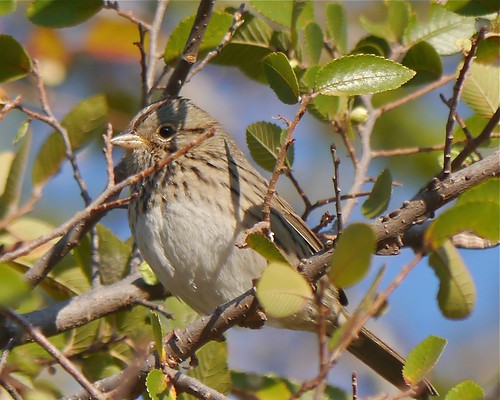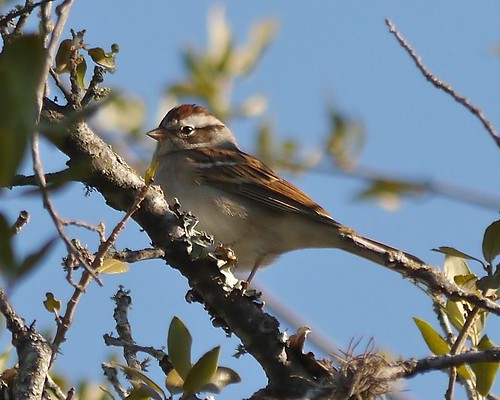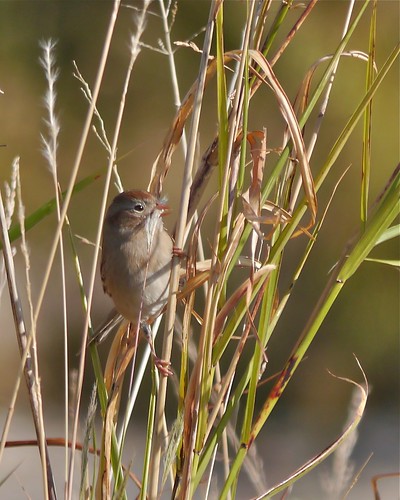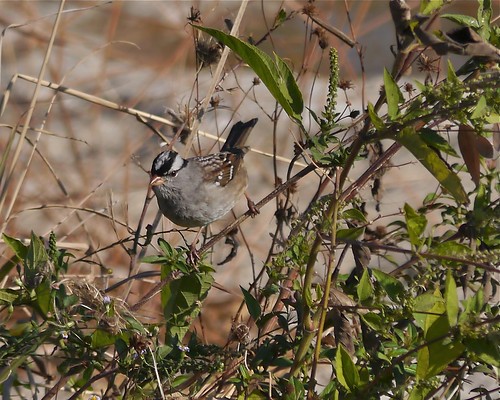I had already run into a few mixed species foraging flocks on Stillforest that included more winter resident species like Blue-headed Vireo, Ruby-crowned Kinglet, Orange-crowned Warbler, Yellow-rumped Warbler, and a few fall migrant Nashville Warblers...
These are all species you expect to find up in the trees. And they were challenging to find and see because they were staying very high in the canopy, probably because that's where the sun was getting through on that cold morning. There were a few Chipping Sparrows up in the trees too, which is one of the few sparrow species that is also expected to be found up in the canopy. I got this photo of one a little further down Stillforest:
I took almost an hour to cover the half-mile length of Stillforest. On quiet weekend mornings this is one of my favorite streets in the neighborhood to bird. I finally got to Meadowheath and headed towards the Town and Country playing fields and Lake Creek Trail. When I got there I discovered that the creek bed was loaded with birds, most of them sparrows. As parents yelled and screamed at a baseball game on the other side of the creek, I stood in one spot for about 30 minutes watching sparrows in the tall grass and brush. The first I saw was this Field Sparrow that was eating grass seeds right beside the trail. It wasn't too worried about me and I got this relatively close photo:
This was the first Field Sparrow of the winter for me. It sure was fun watching it hop onto stalks of grass, often riding them down as they bent under its weight as it reached for the seed heads. Other sparrow species I found in the creek bed were Savannah Sparrow, Clay-colored Sparrow, Chipping Sparrow, Lincoln's Sparrow, and White-crowned Sparrow. I was most excited to find the White-crowned Sparrows. This is a species I don't often find in the neighborhood and I estimated that there were at least 8 of them foraging in the creek bed. Here's one:
Sparrows can be an intimidating group of birds to learn. Most are cryptic mixes of relatively drab colors. Most have skulking behavior that makes them difficult to find and observe. But it's not too hard to start learning some of the basic differences. Is the breast streaked or not? Is there a ring around the eye? If so, what color is the eye-ring? Is there a dark stripe through the eye? What color is the bill? What colors are in the face? You can see the differences in these features in the photos above. And once you start looking more closely for these and other features, you can't help but start to appreciate their subtle and intricate beauty.
I split up yesterday morning into two bird lists:





No comments:
Post a Comment